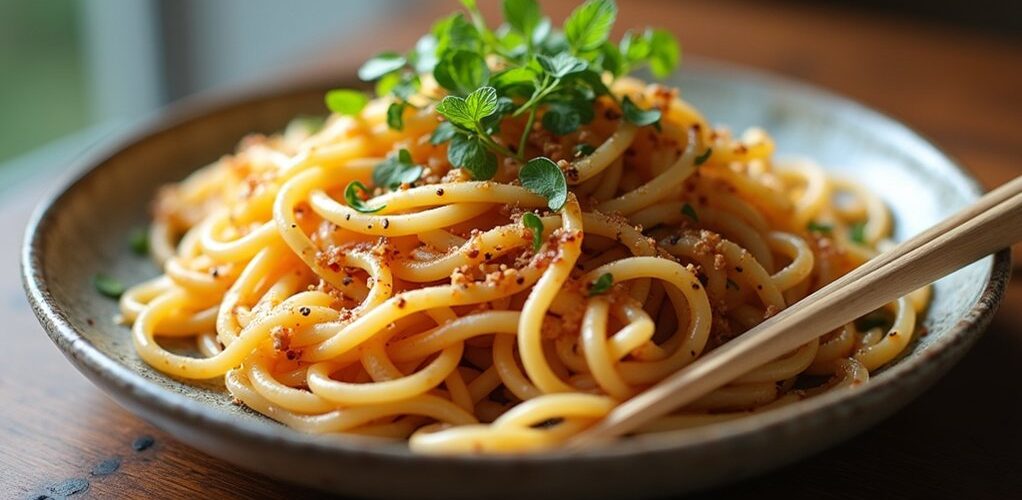
Glass noodles are not considered low-carb, containing approximately 39.3 grams of carbohydrates per cup serving. While they offer benefits like being gluten-free and having a low glycemic index, their high carbohydrate content requires careful portion control for those monitoring carb intake. Healthier alternatives include shirataki, kelp, or zucchini noodles, which contain considerably fewer carbohydrates. Understanding proper serving sizes and cooking methods can help integrate these noodles into a balanced diet plan.
Key Takeaways
- Glass noodles are not low-carb, containing 39.3 grams of carbohydrates per cup with minimal fiber content.
- Despite having a low glycemic index (20-45), glass noodles can quickly exceed daily carbohydrate limits for low-carb dieters.
- Better low-carb alternatives include shirataki noodles (0g net carbs), kelp noodles (1g), and zucchini noodles (2-3g).
- Portion control is essential; limit servings to 1/4 to 1/2 cup of cooked glass noodles to manage carbohydrate intake.
- While healthier than wheat noodles and gluten-free, glass noodles should be paired with proteins and vegetables for balanced nutrition.
Understanding Glass Noodles and Their Composition
While glass noodles may appear delicate and transparent, these popular Asian noodles are made primarily from mung bean starch, which gives them their distinctive appearance and texture.
Despite their light appearance, glass noodles contain a high carbohydrate content, with approximately 39.3 grams per serving. However, their composition offers unique nutritional characteristics that set them apart from other noodle varieties.
One notable aspect of glass noodles is their low glycemic index, ranging from 20-45, which means they have a minimal impact on blood sugar levels compared to other carbohydrate-rich foods.
Glass noodles stand out for their gentle effect on blood sugar, thanks to a remarkably low glycemic index between 20-45.
Additionally, since they're made from mung bean starch, these noodles are naturally gluten-free, making them an excellent alternative for individuals with celiac disease or gluten sensitivities.
The Carbohydrate Content Breakdown
A detailed examination of glass noodles reveals their substantial carbohydrate content, with a single cup serving containing 39.3 grams of carbohydrates.
Despite their high carbohydrate content, these noodles possess a low glycemic index ranging from 20-45, which means they don't cause dramatic blood sugar fluctuations.
For those following a low-carb diet, glass noodles present a significant challenge due to their minimal fiber content of just 0.9 grams per serving.
This lack of fiber, combined with their overall carbohydrate load, makes them a less suitable option for those trying to manage carbohydrate intake.
Careful attention to portion sizes becomes essential, as even modest servings can quickly accumulate toward daily carbohydrate limits, potentially disrupting dietary goals.
Comparing Glass Noodles to Other Noodle Types
Understanding how glass noodles compare to other noodle varieties helps consumers make informed dietary choices.
While glass noodles contain considerably fewer carbohydrates than traditional wheat noodles, they still provide 39.3 grams of carbs per cup, making them less suitable for low-carb diets. In contrast, alternative options like shirataki and kelp noodles offer minimal carbohydrate content, with 0 and 1 gram of net carbs respectively.
Glass noodles may be healthier than wheat pasta, but their high carb content makes them unsuitable for low-carb eating plans.
For those seeking low-carb alternatives, zucchini noodles and spaghetti squash present excellent options, containing only 2-3 grams of net carbs per serving.
These alternatives also provide dietary fiber, which is lacking in glass noodles. Though glass noodles offer a gluten-free option with a lower glycemic index, they remain a higher-carb choice compared to modern low-carb noodle alternatives.
Health Benefits and Nutritional Profile
Despite their relatively high carbohydrate content, glass noodles offer several notable health benefits and nutritional advantages worth considering. While not a traditional low-carb noodle option, their low glycemic index makes them suitable for blood sugar management. The gluten-free nature of these noodles provides a safe alternative for those with celiac disease or gluten sensitivities, while their essential minerals support overall health.
| Nutrient | Health Benefit |
|---|---|
| Low GI (20-45) | Better blood sugar control |
| Carbohydrates | Sustained energy release |
| Iron | Oxygen transport support |
| Phosphorus | Bone health maintenance |
| Potassium | Electrolyte balance |
The nutritional profile of glass noodles makes them a viable choice for those seeking alternative pasta options, particularly when balanced with protein and vegetables in a complete meal.
Glass Noodles in Low-Carb Diet Plans
Glass noodles contain a substantial amount of carbohydrates at 39.3 grams per cup, making them a challenging choice for those following strict low-carb dietary protocols.
While their low glycemic index suggests better blood sugar management, the overall carbohydrate load remains significant, particularly when considering typical serving sizes in Asian dishes.
For individuals committed to low-carb eating plans, careful portion control becomes essential, with recommended servings of no more than 1/4 to 1/2 cup to maintain carbohydrate restrictions while still enjoying this traditional ingredient.
Carb Content Analysis
When considering glass noodles for a low-carb eating plan, the carbohydrate content presents significant challenges for dieters. With 39.3 grams of carbs per cup serving, these noodles contain a high carbohydrate content that may exceed daily limits for those following strict low-carb diets.
Despite being gluten-free and having a low glycemic index ranging from 20-45, glass noodles' minimal fiber content of 0.9 grams per serving makes them less ideal for health-conscious consumers seeking high-fiber alternatives.
While their modest impact on blood sugar levels offers some advantage, portion control becomes essential for maintaining carbohydrate restrictions. Those following a low-carb diet should carefully measure servings and consider these noodles as an occasional choice rather than a regular staple in their meal planning.
Suitable Portion Guidelines
To successfully incorporate glass noodles into a low-carb eating plan, careful attention to portion sizes becomes vital for maintaining dietary goals. For those following a low-carb diet, experts recommend limiting serving sizes to approximately 1/2 cup of cooked glass noodles, which helps manage the overall carbohydrate content while still enjoying the dish.
Effective portion control involves integrating glass noodles as a minor component of meals, emphasizing high-protein ingredients and low-carb vegetables as the main elements.
This meal balance approach allows individuals to experience the unique texture and flavor of glass noodles while staying within their daily carbohydrate limits. When planning meals, it's essential to evaluate how the noodles' carbohydrate contribution fits into the broader context of daily nutritional targets.
Best Practices for Portion Control
Effective portion control begins with measuring glass noodles before cooking, as they can expand greatly during preparation and lead to unintended overconsumption.
Using smaller bowls naturally limits serving sizes while creating a visually satisfying meal that aligns with recommended portions of 1/4 to 1/2 cup cooked noodles.
Maintaining consistent portion sizes through careful measurement and appropriate dishware choices helps individuals better manage their carbohydrate intake while still enjoying glass noodles as part of a balanced diet.
Measure Before You Cook
Proper measurement of glass noodles before cooking stands as a vital step in maintaining portion control and managing carbohydrate intake. Since these noodles expand considerably during cooking, measuring them in their dry state helps prevent unintentional overconsumption of carbohydrates, which can affect a balanced diet. A standard serving of one cup contains approximately 39.3 grams of carbohydrates.
Using a food scale provides the most accurate method for measuring portions, as cooked glass noodles can vary in density and weight.
While these noodles offer a moderate glycemic index of 20-45, which helps regulate blood sugar levels, careful portion control remains essential. For ideal nutritional balance, combine measured servings with abundant vegetables and lean proteins to create satisfying meals without excessive carbohydrate content.
Watch Your Serving Size
Managing portion sizes of glass noodles requires specific attention beyond initial measuring techniques. For those following low-carb diets, it's essential to note that a single cup contains 39.3 grams of carbohydrates, which can greatly impact daily carb limits.
To maintain stable blood sugar levels, experts recommend limiting servings to half a cup per meal.
To optimize portion control while maintaining satisfaction, combine glass noodles with protein-rich foods and fibrous vegetables. This strategy helps regulate carbohydrate intake while promoting fullness.
Additionally, being mindful of the calorie content is important, as each cup provides approximately 160 calories. Despite their relatively low glycemic index of 20-45, careful portioning remains critical for those monitoring their carbohydrate consumption and seeking to maintain a balanced diet.
Small Bowls Help Control
Small bowls serve as a powerful tool in controlling glass noodle portions, as research consistently shows that vessel size directly influences serving amounts. Studies demonstrate that reducing portions by 20-30% through smaller bowls can effectively decrease caloric consumption while maintaining satisfaction levels, helping manage weight more effectively.
Key benefits of using small bowls for portion control include:
- Enhanced visual perception of food abundance
- Better regulation of blood sugar levels
- Improved mindfulness while eating
- Natural support for hunger cues recognition
The psychological impact of using smaller bowls is particularly significant with glass noodles, as these carbohydrate-rich foods can be easily overconsumed. When served in smaller vessels, the same amount of noodles appears more substantial, leading to greater satisfaction with less food intake.
Keto-Friendly Alternatives to Glass Noodles
While glass noodles may not fit into a ketogenic lifestyle, several excellent low-carb alternatives can satisfy noodle cravings without compromising dietary goals. For those following a keto diet, options like shirataki noodles and kelp noodles provide virtually zero net carbs while maintaining a satisfying texture. Vegetable-based noodles offer nutrient-rich alternatives that align with low-carb requirements. Incorporating protein-rich keto foods like fatty fish and fresh meats can further enhance the nutritional value of these meals.
| Noodle Type | Net Carbs (per serving) | Main Ingredient |
|---|---|---|
| Shirataki | 0g | Konjac Yam |
| Kelp | 1g | Brown Kelp |
| Zucchini | 3g | Fresh Zucchini |
| Spaghetti Squash | 5g | Winter Squash |
| Low-carb Egg | 1g | Cream Cheese & Eggs |
These keto-friendly alternatives guarantee that those following a low-carb lifestyle can still enjoy noodle dishes while maintaining their dietary goals.
Cooking Methods to Reduce Carb Impact
Although glass noodles contain a considerable amount of carbohydrates, specific cooking techniques can help minimize their impact on blood sugar levels and overall carb absorption.
Several cooking methods can effectively reduce the glycemic impact of these noodles while maintaining their appealing texture and taste.
Key strategies to reduce carb impact include:
- Soaking dried noodles in boiling water for 10-15 minutes before cooking
- Quick-cooking for 3-5 minutes to maintain ideal texture
- Pairing with high-protein ingredients and vegetables to balance carbohydrate load
- Rinsing cooked glass noodles under cold water to remove excess starch
Additionally, incorporating low-calorie sauces can enhance flavor without greatly increasing carbohydrate content.
For those on a keto diet, it's important to limit carbohydrate intake to 20-30 grams per day to maintain ketosis. These preparation methods, combined with mindful portion control, can make glass noodles a more suitable option for those monitoring their carbohydrate intake.
Reading Labels and Making Smart Choices
Selecting the right glass noodles requires careful attention to product labels and nutritional information, especially for those monitoring their carbohydrate intake. When reading labels, consumers should look for products made with 100% mung bean starch and verify they are certified gluten-free to avoid cross-contamination risks.
For those following low-carb diets, it's essential to note that glass noodles contain approximately 39.3 grams of carbohydrates per serving, making them unsuitable for strict carbohydrate-restricted meal plans.
Quality indicators on packaging should also be considered, as high-quality noodles will maintain transparency and possess ideal texture when prepared correctly. Savvy shoppers should examine ingredient lists for unnecessary additives or preservatives, ensuring they choose products that align with their dietary requirements while maintaining authentic taste and texture profiles.
Tips for Incorporating Glass Noodles Into a Balanced Diet
Successfully incorporating glass noodles into a balanced diet starts with practicing mindful portion control, as their 39.3 grams of carbohydrates per cup serving can quickly add up.
Strategic substitution of glass noodles for higher-glycemic alternatives offers a smart way to maintain blood sugar control while still enjoying noodle-based dishes.
The key to maximizing their nutritional benefits lies in balancing the noodles with lean proteins and colorful vegetables, creating well-rounded meals that support overall health goals.
Portion Control Matters Most
Mastering portion control stands as the cornerstone of incorporating glass noodles into a balanced diet. With approximately 39.3 grams of carbohydrates per cup, managing serving sizes becomes crucial for maintaining healthy carbohydrate intake while enjoying these versatile noodles.
To effectively manage portions and enhance nutritional value, consider these key strategies:
- Limit servings to 1/2 cup to better control carbohydrate consumption
- Combine glass noodles with high-protein ingredients like lean meats or tofu
- Add abundant fresh vegetables to increase fiber and nutrients
- Track daily carbohydrate intake to guarantee noodles fit within dietary goals
These portion control practices allow individuals to savor glass noodles while maintaining a balanced diet, particularly beneficial for those monitoring their carbohydrate consumption or working toward specific health objectives.
Smart Substitution Strategies
When incorporating glass noodles into a balanced diet, thoughtful substitution strategies can make a significant difference in maintaining nutritional goals while enjoying these versatile noodles.
One effective approach is to replace traditional pasta with glass noodles in soups and salads, which naturally reduces calorie intake to around 160 calories per serving. To optimize nutrition, pair these noodles with high-protein ingredients like lean meats or tofu, and incorporate abundant vegetables for added nutrients and fiber.
For those following a low-carb lifestyle, consider using smaller portions of glass noodles while increasing the ratio of protein and vegetables. Their low glycemic index of 20-45 makes them particularly suitable when combined with low-carb sauces and accompaniments, helping to maintain stable blood sugar levels throughout the day.
Balancing Macros With Noodles
Building a balanced meal around glass noodles requires careful attention to macronutrient ratios and portion sizes. While these noodles are a higher-carb, gluten-free option compared to low-carb alternatives, they can be incorporated effectively into balanced meal planning through strategic portioning and thoughtful ingredient combinations.
To optimize the nutritional value of glass noodle dishes, consider these key strategies:
- Pair noodles with high-protein ingredients like lean meats, tofu, or eggs.
- Include fiber-rich vegetables to enhance satiety and slow carbohydrate absorption.
- Add healthy fats through ingredients such as sesame oil or avocado.
- Control portion sizes by measuring noodles before cooking and bulking up dishes with vegetables.
This balanced approach allows for enjoyment of glass noodles while maintaining nutritional goals and managing carbohydrate intake effectively.
Frequently Asked Questions
Are Glass Noodles Unhealthy?
Glass noodles' nutritional value varies based on cooking methods and ingredient quality. While offering health benefits like low glycemic index, they require portion control due to high carbohydrates and minimal nutrients.
Are Korean Glass Noodles High in Carbs?
Korean glass noodles contain significant carbohydrates, with 39.3 grams per cooked cup serving. Despite their moderate glycemic index and simple ingredients, portion control remains important when considering their nutritional value.
What Type of Noodle Is Lowest in Carbs?
Shirataki noodles contain zero net carbs, making them the lowest carb noodle alternative. These versatile noodles offer health benefits during meal prep and adapt well to various cooking methods.
Are Glass Noodles Better for You Than Rice Noodles?
Nutritional comparison shows glass noodles offer better health benefits with lower glycemic index and essential minerals. Their versatile texture differences allow diverse recipe variations across cultures, while various cooking methods maintain their nutritional value.
Conclusion
While glass noodles contain significant carbohydrates and aren't suitable for strict low-carb diets, they can be enjoyed in moderation as part of a balanced eating plan. Their versatility, quick cooking time, and lighter texture make them a reasonable alternative to wheat-based pasta. For those following ketogenic or very low-carb diets, alternatives like shirataki noodles or zucchini spirals offer better options while maintaining similar culinary applications.


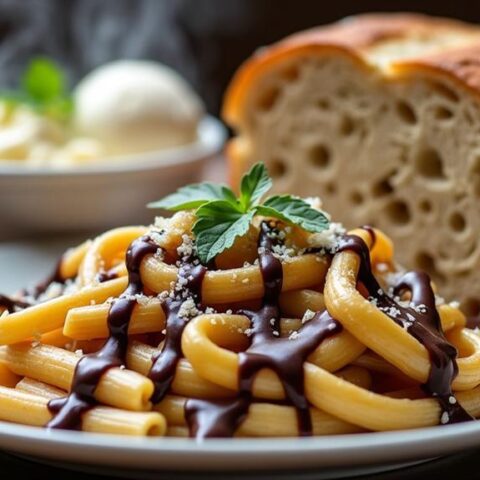
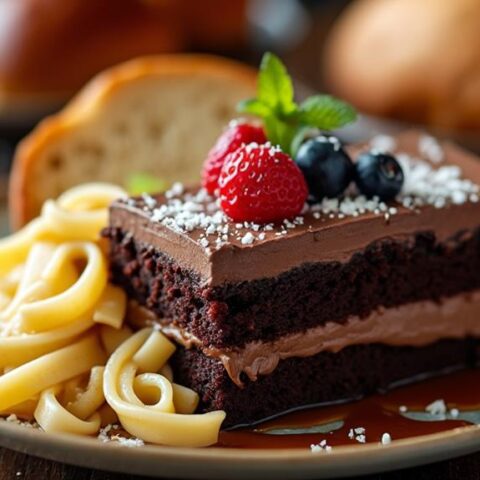

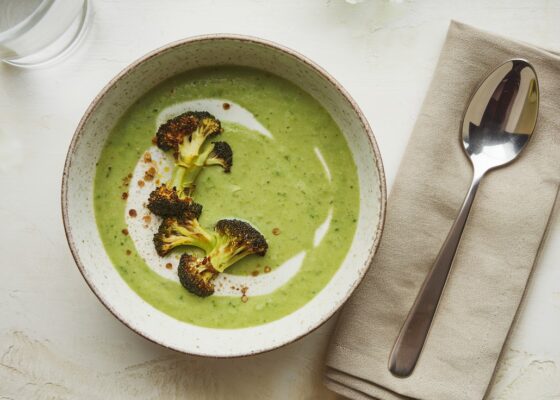

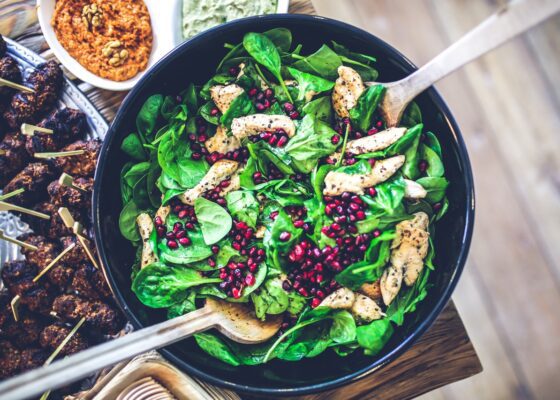
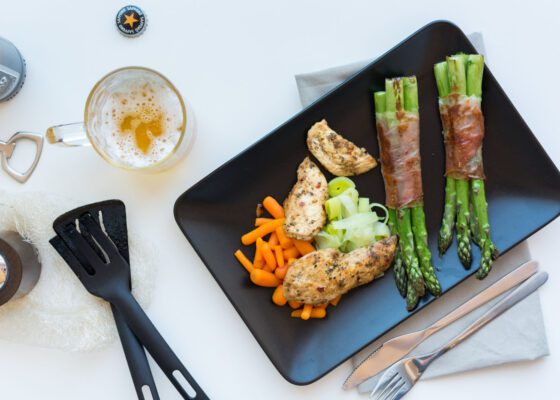
No Comments